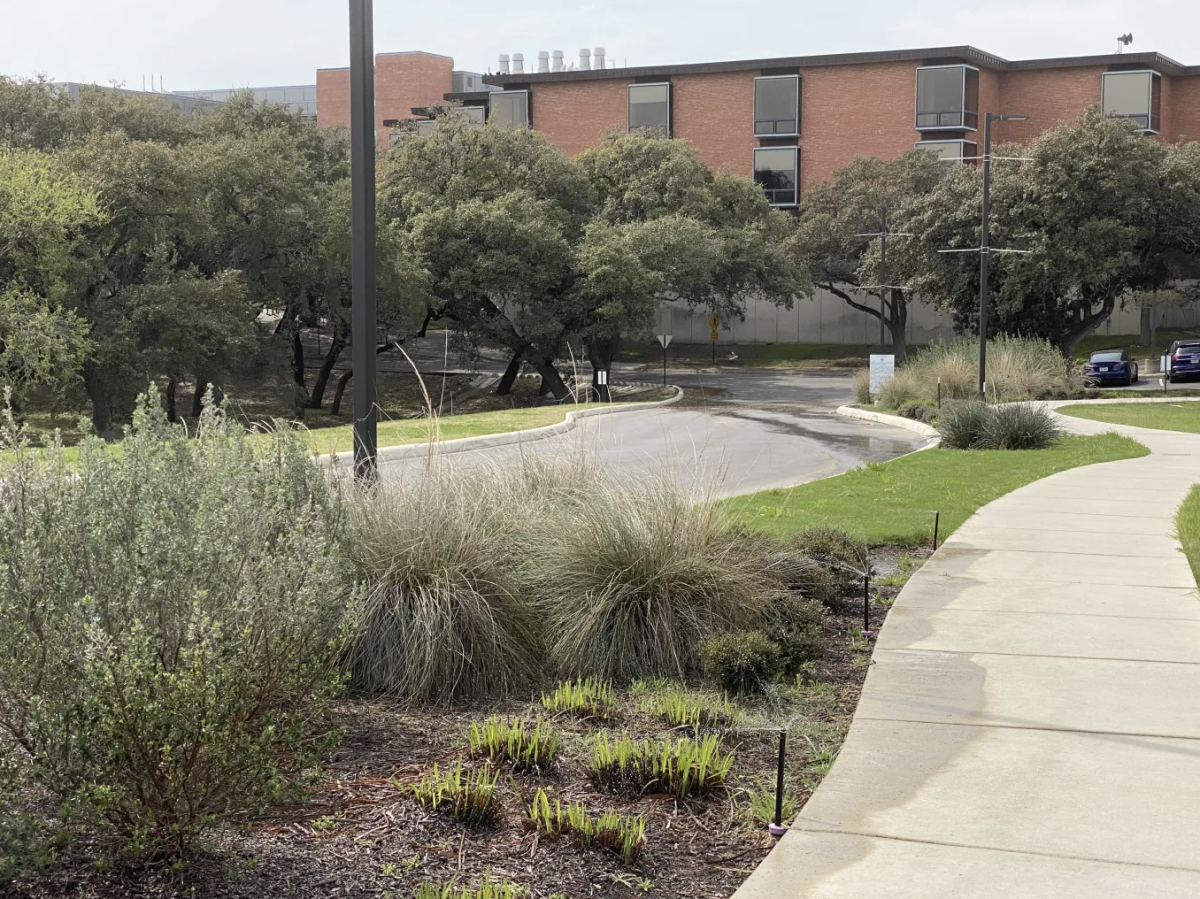It’s that time of year again: the mountain laurels are blooming, temperatures are climbing … and sprinklers across campus are running for all hours of the day. Just this Tuesday, on my way to and from City Vista, I noticed the sprinklers along Beneski Parkway remained on throughout the day. The same thing happened Wednesday; but they’re just sprinklers, right? What’s the harm in a little extra water for the plants on campus?
There’s no denying that eight straight hours of active sprinklers is overkill. At that point, you’re watering the sidewalk more than you are the plants. But this is just one symptom of a larger problem here at Trinity. I honestly believe that Trinity refuses to acknowledge the realities of a San Antonio climate, and overwatering or watering without regard is emblematic of that. Even though we’ve already experienced our first 90 degree day of the year after less than three months, Trinity acts as if drought and extreme temperature fluctuations have no effect on our campus at all.
This mindset is costing our school money. Unchecked sprinkler usage diminishes the effects of irrigation, and causes 30 to 50% of water to be wasted. Watering plant beds in the middle of the day is a surefire way to have that water almost immediately evaporated, both from the soil and from the air surrounding plants, resulting in plants that still don’t get enough water. Sprinklers are also frequently not placed or angled properly, leading to high levels of runoff that displace water meant for irrigation.
So much water is effectively poured down the drain here on our campus. The worst part is, the plants that are so painstakingly picked and pruned in sprawling landscapes are making our water waste problem worse. Though we’re slowly learning from our mistakes, many of the plants on campus are not native, and therefore not suited to the local climate. This results in high levels of die-off, causing the plants to be replaced with more of the same kind.
Just last month, a prolonged period of freezing weather culled many landscaped areas, including the area just outside Northrup Hall. Within a week of these plants dying, they were uprooted and replaced by Facilities Services in order to maintain appearances. As the spring and summer months approach, numerous other plants that have been looked after will succumb to conditions they are simply not meant to endure. All the time, money and water that went into fostering these plants will have been for nothing.
Once upon a time at Trinity, we filled our landscapes with native plants that were drought- and heat-resistant, capable of surviving the arduous summer heat and long periods without access to water. Back then, there was simply no need for an irrigation system that ran all day, every day. While I can’t attest to the amount of money saved, I’m sure that we could learn a few things from our history with native plants.
I will say that irrigation on our campus has already taken steps to be more sustainable. Whenever you pass an area with a lot of sprinklers, you’ll probably see a sign that says something to the effect of “don’t drink this water, it’s too gross for you!” These signs advertise the fact that we use recycled or reclaimed water in order to reduce water consumption on campus, which is great! But whether this water is recycled or not, it still seems wasteful to let the sprinklers run at less-than-optimal times.
To minimize water lost to evaporation, it’s best to water lawns and landscaping areas in the morning or evening. This is especially important in Texas, since we’re no stranger to drought restrictions. Even outside of those restrictions, the San Antonio Water System (SAWS) rules that landscape watering with an irrigation system or sprinkler may occur any day of the week before 11 a.m. or after 7 p.m. — the only exception, of course, is if recycled water is used instead, a loophole that Trinity seems to exploit.
From what I’ve seen at Trinity in my four years here, there is no regard for water usage, particularly through the irrigation systems we have in place. We can replace all the non-native plants on campus as many times as we want, but that won’t fix how much water our campus is throwing away.
What I want our university to understand is mindfulness. We consume a lot more than we could ever think we do. Addressing that is one thing, but changing our practices is another. So what can we do? One easy option is to call Facilities up at 210-999-8413 and ask them what they’re doing (I may or may not have done this on Wednesday). Advocate for the presence of native plantlife that can survive without drying out on a daily basis. And, most importantly, take notice of the space around you — you might never expect how you could change it.



